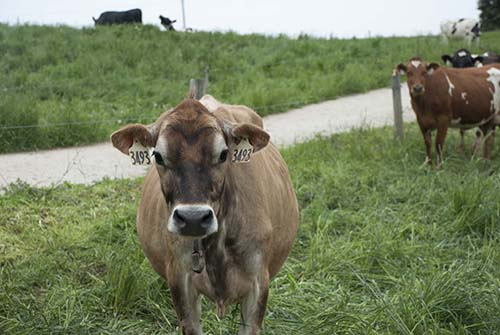
"Are we still heading the right direction with grazing?" That is the question Joel McNair, editor of Graze magazine, asked the audience at the Missouri Grazing Conference last week in Springfield, Mo.
His observation is that graziers are doing well despite all the challenges farms face. However, he noted that grazing is still operating in a "scientific bubble," and more research for pasture-based dairy would benefit producers. Other challenges he sees with pasture-based dairying include high land costs, poor quality winter feeds, high feed costs and limited hay supplies, lack of skilled employees, government policy and weather volatility.
McNair offered the following suggestions to graziers to help move their operation successfully into the future:
"Weatherproof" your dairy. Weather is unpredictable. Even if you are unable to irrigate all season long, consider filling in the gaps between rain events. Plant a mixture of annuals and perennials, and make use of cover crops.
Build feed reserves. This will help supplement cattle feed needs during the nongrowing season. Review stocking rates on pastures to ensure adequate feed availability. Measure, monitor and manage pastures to get more productivity from them.
Look harder at ‘added value' outlets. Consumers are getting more curious about where their food comes from, so graziers could look for opportunities to sell grass-fed beef. Currently, about two-thirds of the grass-fed beef consumed in the United States is imported, noted McNair.
Create a cattle genetics plan. Every farm is different, and the breeding plan should reflect that. Don't be swayed too much by the ‘flavor of the year' in regards to crossbreeding, said McNair. New breeds or sires may become popular, but create a plan that works for your farm and stick to it.
Develop a systems approach. Oftentimes on farms, too much attention is paid to the parts and too little to the whole farm, said McNair. Evaluate and make changes that improve the farm as a whole.
Cultivate new management talent. McNair sees a need for more formalized programs to teach the next generation of graziers. Farms that graze need employees with multiple skills and the ability to adjust on the go. The Dairy Grazing Apprenticeship program in the Midwest is one example of training that can prepare future employees and farm owners in the art and science of grazing.
"What graziers do to improve land and water quality is something special," concluded McNair. "And we keep getting better at what we do. Our biggest limitation is human capital. We need to find more people up to the challenge."
Grazing resources are available from the University of Missouri Extension website: http://dairy.missouri.edu/grazing/

The author is an associate editor and covers animal health, dairy housing and equipment, and nutrient management. She grew up on a dairy farm near Plymouth, Wis., and previously served as a University of Wisconsin agricultural extension agent. She received a master's degree from North Carolina State University and a bachelor's from University of Wisconsin-Madison.









